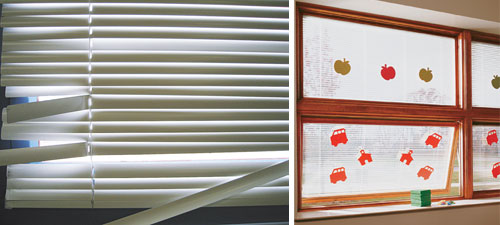Can Existing Schools Get to High Performance? An Update on School Modernization Strategies
Replacing the Windows: Fountain of Youth for Existing Buildings
Perhaps no single feature of a high-performance school is more prominent than its daylighting. Abundant, natural light contributes to just about every goal of a high-performance school, from reducing the need for electric light to improving the health, productivity and general satisfaction of teachers and students. By now it is well documented that test scores go up, sick days go down, and a host of other benefits accrue to the lucky occupants of schools with well designed daylighting. And when modernizing an existing school, maximizing the daylighting means getting the windows right.
A number of flexible replacement options are now available to meet tight budget and time limitations in school projects. In older school buildings with historic significance, or in the rare case when windows are so damaged and deteriorated that nothing can be salvaged, a complete tear-out may be the only option, although this is typically an expensive and labor intensive process, and will probably require custom designed window replacements.
But if the existing frame is in good condition, another approach is to remove the operable sash, and keep the existing frame. Fully assembled aluminum-clad wood or fiberglass replacement windows are available that can be easily slipped into existing window "pockets" with no damage to the existing trim, paint or plaster. If the external trim is not in good condition, sashes can be replaced by inserting a new window within the existing frame and using frame expander products to update or cover exterior trim.
To reduce labor and disturbance to existing construction, standard subframe systems (to replace wood windows) and T-subframe systems (for metal windows) can be preassembled and installed from the interior of the building, eliminating the need for exterior scaffolding or lifts.
Once installed, today's high performance windows are designed to help control all the thermal, visual, acoustic and other factors related to effective daylighting. Some of the opportunities available to get the most performance mileage out of replacing windows include:
Superior Energy Efficiency: High-performance windows have lower heat loss, less air leakage, and lower unwanted solar gain. Windows with a whole-window U-factor of 0.4 or lower and a solar heat gain coefficient of 0.5 or lower, with dual or triple glazing, are recommended for use in schools. The U-factor of the entire window unit - center of glass, edge of glass, window sash and frame − is more relevant than that of the glass alone. Low-e glass transmits visible light but reflects excess heat and ultraviolet light. Modern wood in frames is a natural insulator, about 1,000 times more effective than aluminum. Some new fiberglass composite frame materials offer similar thermal performance. New integrated window units offer dramatic energy savings over the leaky windows often found in existing schools.
Comfort for Concentration. Minimized heat loss in the winter and heat gain in the summer means that teachers and students are comfortable and can concentrate in all seasons, even in areas right next to window glass. Warmer window surfaces in high performance windows improve comfort and minimize condensation.
Innovative Shading: Side by side with the abundant benefits of daylighting come formidable solar control challenges. The innovative structural exterior shading often found in new high-performance schools is often too expensive or not feasible for modernization projects. For schools, a popular alternative is the between-the-glass blind, either "tilt only" or fully operable by teachers. Compared to roomside blinds, between-the-glass blinds reduce solar heat gain by 43 percent, according to the ASHRAE Fundamentals Handbook. But they have a number of other advantages, providing acoustic insulation, improving indoor air quality and eliminating dust, dirt and allergens associated with typical hard to clean roomside drapes and blinds. The cost of constant replacement of damaged blinds is also avoided. As a plus in the classroom, they provide more "tackable" space in the classroom for student art work.
"Re-orienting" an Existing Building? In 2010, a new high-performance school would be sited with exquisite care to take maximum advantage of the sun and natural surroundings, but in the 1960s? Not so much. Replacing the windows, however, comes as close as it is possible to get to remedying the less than ideal orientation of an older school building. Windows can be customized by the needs of various areas, for example by putting high performance double glazing on the south side, triple glazing on the north side, and new between-the-glass shading on the east and west sides.
With the right new windows, an existing school can achieve the same high performance as a new school. This requires educated design and a sophisticated manufacturer. But the good news is that in 2010, whatever else we are short of, both of those are available.
 |
One of the improvements most popular both with school districts (for the savings in energy and replacement) and classroom teachers and students (for the comfort and tackable space) are between-the-glass blinds for high-performance windows. On the left, typical grungy non-helpful roomside blinds, and on the right, between-the-glass blinds. Photo: Pella Commercial |









